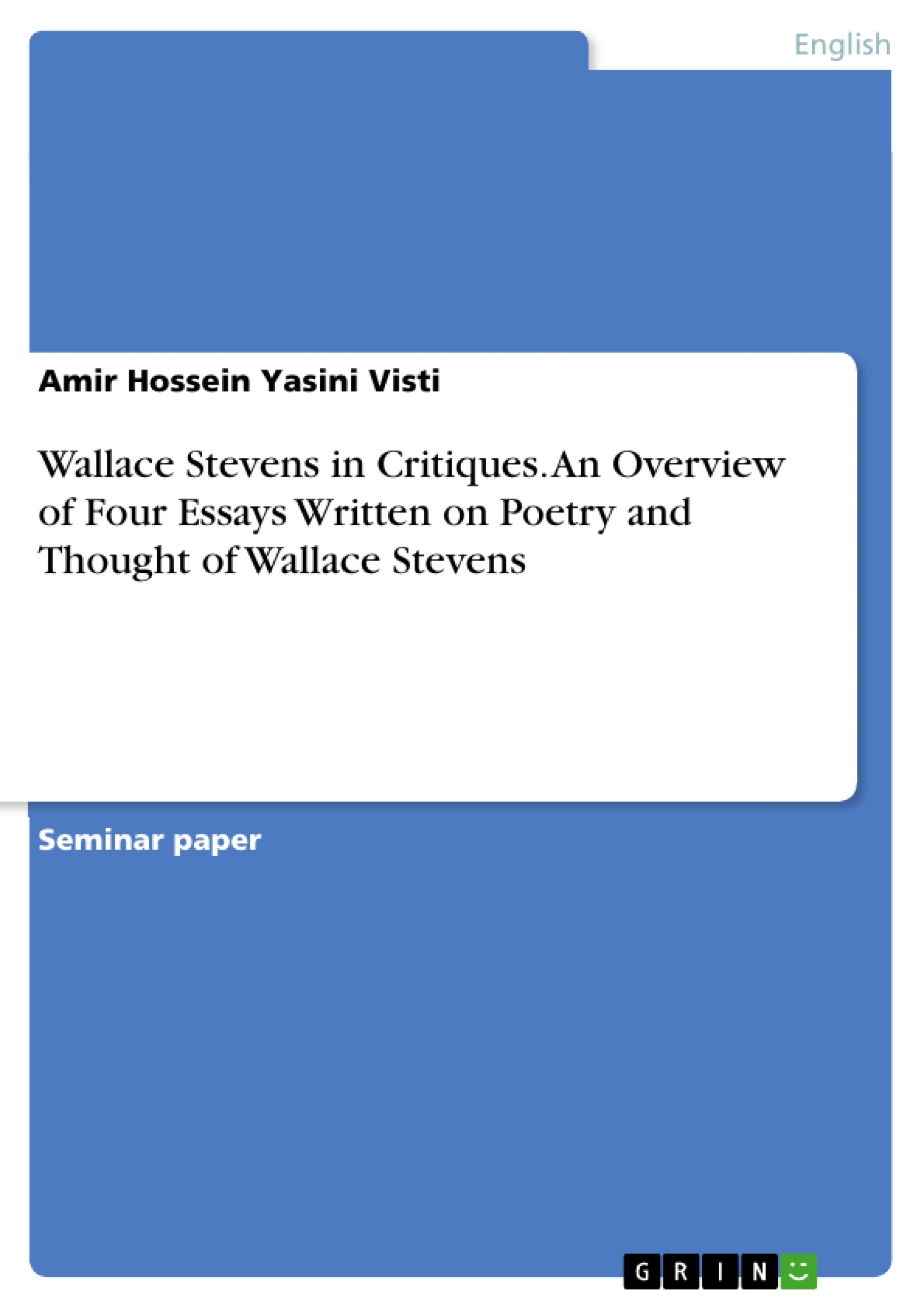The present paper aims to reveal how the poetry and thought of Wallace Stevens are represented in the four essays written in this regard. The first essay by Milton J. Bates involved with the idea of “supreme fiction”, implying that fiction and truth are not separate in nature, and so is God and imagination of the poet. In the second essay, Joseph Carroll asserts that Stevens admitted a “new romanticism” meant a recurrent mode of poetic imagination while romanticism was mostly accounted a historical concept in its traditional sense. Not only did Stevens come to change the concept of romanticism, but also he established a new method in adopting point of view in lyric poetry. As Helen Vendler argues, in order to convey his universal ideas, Stevens used “we”, “he”, or “one” in his works. And finally, a type of “ambivalent attitude” became Wallace Stevens concerning the gender issue while he experienced the social transition in reading the concept of the femininity. Jacqueline Vaught Brogan illustrates that, in order to keep the pervasive trait of his poetry, Stevens reached integration in duality of the masculine and the feminine.
Inhaltsverzeichnis (Table of Contents)
- I. Introduction
- II. Discussion
- Stevens and the Supreme Fiction
- Stevens and Romanticism
- Stevens and the Lyric Speaker
- Stevens and the Feminine
Zielsetzung und Themenschwerpunkte (Objectives and Key Themes)
This paper seeks to provide a comprehensive overview of four essays that analyze the poetry and thought of Wallace Stevens. Each essay focuses on a different aspect of Stevens' work, exploring concepts such as "supreme fiction," "new romanticism," and the role of the lyric speaker.
- The concept of "supreme fiction" and its relationship to poetry and reality.
- Stevens' reinterpretation of Romanticism and the emergence of a "new romanticism."
- The use of pronouns and point of view in Stevens' lyric poetry.
- Stevens' exploration of gender and the feminine in his poetry.
- The role of imagination and its influence on Stevens' poetic vision.
Zusammenfassung der Kapitel (Chapter Summaries)
The first essay, "Stevens and the Supreme Fiction," by Milton J. Bates, explores Stevens' engagement with the concept of "supreme fiction." Bates argues that Stevens believed in the power of fiction as a means of constructing meaning and understanding reality. Stevens' concept of "supreme fiction" is rooted in the idea that human experiences are filtered through the lens of the mind, creating a version of reality that is both subjective and imaginative. The essay examines the role of "supreme fiction" in Stevens' poems, particularly "A High-Toned Christian Old Woman," and its connection to themes of religion, philosophy, and the nature of poetry.
The second essay, "Stevens and Romanticism," by Joseph Carroll, examines Stevens' reinterpretation of Romanticism. Carroll argues that Stevens viewed Romanticism as a recurring mode of poetic imagination rather than a historical period. He explores how Stevens' poetry embodies a "new romanticism" that emphasizes the power of imagination and the search for meaning in a world that has lost its traditional religious foundations. The essay discusses Stevens' use of "belief" as a central theme in his poetry and how it relates to both his Romantic predecessors and his own unique vision.
Schlüsselwörter (Keywords)
This essay delves into the world of Wallace Stevens, focusing on his poetry and its significance. Key themes explored include "supreme fiction," "new romanticism," "imagination," "lyric poetry," and "femininity." These concepts offer a glimpse into Stevens' unique poetic voice and his exploration of the human condition, highlighting his contributions to American Modernist poetry.
- Arbeit zitieren
- Amir Hossein Yasini Visti (Autor:in), 2014, Wallace Stevens in Critiques. An Overview of Four Essays Written on Poetry and Thought of Wallace Stevens, München, GRIN Verlag, https://www.grin.com/document/384243



